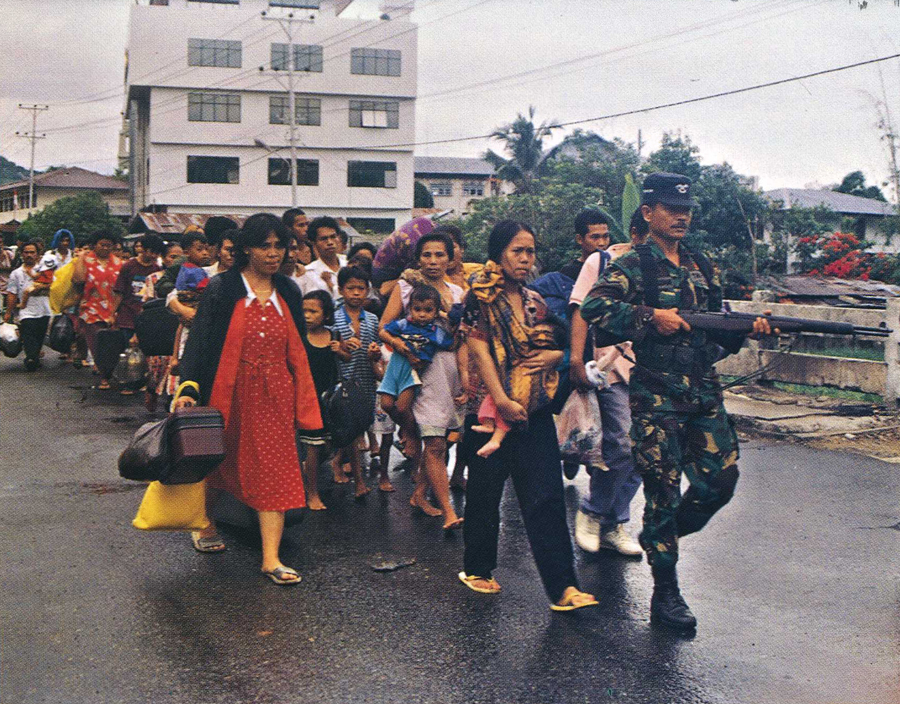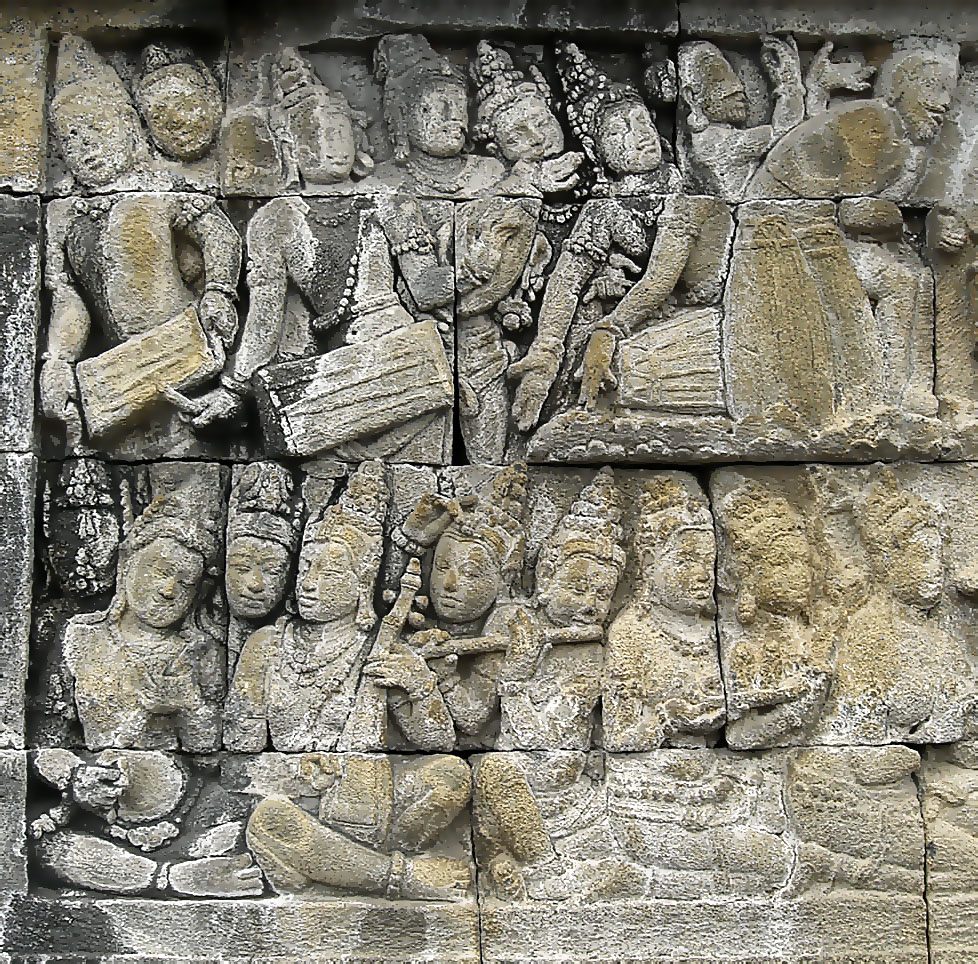|
Poco-poco
Poco-poco or Poco poco is a popular line dance from Maluku province in Indonesia. The ''Poco-poco'' dance became popular in early 1998. In the beginning, the Poco-Poco dance was only an environment known for its emotional closeness with family, relatives, and relatives in Maluku. This dance is accompanied by a song from Maluku which is also titled poco-poco. The poco-poco song was composed by a native Indonesian Ambon songwriter named Arie Sapulette and sung by a famous singer at the time named Yopie Latul. The Poco-Poco dance has found its place in the hearts of the Indonesian people. Since its release, the song and/or accompanying dance has made its way into weddings, family gatherings, and other gatherings of Indonesian people. See also * Cakalele * Dance in Indonesia Dance in Indonesia ( id, Tarian Indonesia) reflects the country's diversity of ethnicities and cultures. There are more than 1,300 ethnic groups in Indonesia. Austronesian roots and Melanesian tribal ... [...More Info...] [...Related Items...] OR: [Wikipedia] [Google] [Baidu] |
Dance In Indonesia
Dance in Indonesia ( id, Tarian Indonesia) reflects the country's diversity of ethnicities and cultures. There are more than 1,300 ethnic groups in Indonesia. Austronesian roots and Melanesian tribal forms are visible, and influences ranging from neighboring Asian and even western styles through colonization. Each ethnic group has its own dances: there are more than 3,000 original dance forms in Indonesia. The old traditions of dance and drama are being preserved in the many dance schools which flourish not only in the courts but also in the modern, government-run or supervised art academies. For classification purposes, the dances of Indonesia can be divided according to several aspects. In the historical aspect it can be divided into three eras; the prehistoric-tribal era, the Hindu-Buddhist era, and the era of Islam. According to its patrons, it can be divided into two genres; court dance and folk dance. In its tradition, Indonesian dances can be divided into two types; t ... [...More Info...] [...Related Items...] OR: [Wikipedia] [Google] [Baidu] |
Yopie Latul
Yopie Latul (7 September 1953 – 9 September 2020) was an Indonesian singer. Career Yopie was born in Ambon. He started his singing career in 1982, becoming known to the public after releasing his single titled "Ayun Langkahmu" by Elfa Secioria and Wieke Gur in 1986. In addition, Yopie is also known for his song "Kembalikan Baliku" created by Guruh Soekarnoputra, which he performed at the 1987 Indonesian Popular Song Festival with the Swara Mahardhika choir. Yopie was also famous for the popular ethnic dance song "Poco-poco" (1995), for which he won the 2001 Indonesian Music Award in the category of Best Disco Singer/House Music/Rap/Dance Music. Death In early September 2020, Yopie tested positive for COVID-19 during the COVID-19 pandemic in Indonesia after attending an Independence Day event in Bogor with his band "Sound of Curly"; two of his band members also tested positive. He was initially asymptomatic, but on 7 September he was rushed to the Sentra Medika Hospital in ... [...More Info...] [...Related Items...] OR: [Wikipedia] [Google] [Baidu] |
Line Dance
A line dance is a choreographed dance in which a group of people dance along to a repeating sequence of steps while arranged in one or more lines or rows. These lines usually face all in the same direction, or less commonly face each other.Knight, Gladys L. (2014). ''Pop Culture Places: An Encyclopedia of Places in American Popular Culture'', p.102. ABC-CLIO. .Lane, Christy (2000/1995). ''Christy Lane's Complete Book of Line Dancing'', p.2-4. Human Kinetics. .Zakrajsek, Dorothy; Carnes, Lois; and Pettigrew, Frank E. (2003). ''Quality Lesson Plans for Secondary Physical Education, Volume 1'', p.188. Human Kinetics. . Unlike circle dancing, line dancers are not in physical contact with each other. Each dance is usually associated with, and named for, a specific song, such as the Macarena (both eponymous) or Electric Slide (associated with the 1982 single "Electric Boogie") are a few of the line dances that have consistently remained part of modern American culture for years. Line da ... [...More Info...] [...Related Items...] OR: [Wikipedia] [Google] [Baidu] |
Maluku (province)
Maluku is a province of Indonesia. It comprises the central and southern regions of the Maluku Islands. The main city and capital of Maluku province is Ambon on the small Ambon Island. The land area is 62,946 km2, and the total population of this province at the 2010 census was 1,533,506 people, rising to 1,848,923 at the 2020 Census. The official estimate as at mid 2021 was 1,862,626. Maluku is located in Eastern Indonesia. It is directly adjacent to North Maluku and West Papua in the north, Central Sulawesi, and Southeast Sulawesi in the west, Banda Sea, East Timor and East Nusa Tenggara in the south and Arafura Sea and Papua in the east. Maluku has two main religions, namely Islam which at the 2020 Census was adhered to by 52.85% of the population of the province and Christianity which is embraced by 46.3% (39.4% Protestantism and 7.0% Catholicism). Maluku is recorded in the history of the world due to conflict or tragedy of humanitarian crisis and sectarian conflict ... [...More Info...] [...Related Items...] OR: [Wikipedia] [Google] [Baidu] |
Indonesia
Indonesia, officially the Republic of Indonesia, is a country in Southeast Asia and Oceania between the Indian and Pacific oceans. It consists of over 17,000 islands, including Sumatra, Java, Sulawesi, and parts of Borneo and New Guinea. Indonesia is the world's largest archipelagic state and the 14th-largest country by area, at . With over 275 million people, Indonesia is the world's fourth-most populous country and the most populous Muslim-majority country. Java, the world's most populous island, is home to more than half of the country's population. Indonesia is a presidential republic with an elected legislature. It has 38 provinces, of which nine have special status. The country's capital, Jakarta, is the world's second-most populous urban area. Indonesia shares land borders with Papua New Guinea, East Timor, and the eastern part of Malaysia, as well as maritime borders with Singapore, Vietnam, Thailand, the Philippines, Australia, Palau, and India ... [...More Info...] [...Related Items...] OR: [Wikipedia] [Google] [Baidu] |
Ambon Island
Ambon Island is part of the Maluku Islands of Indonesia. The island has an area of and is mountainous, well watered, and fertile. Ambon Island consists of two territories: the city of Ambon, Maluku, Ambon to the south and various districts (''kecamatan'') of the Central Maluku Regency to the north. The main city and seaport is Ambon, Maluku, Ambon (with a 2020 Census population of 347,288), which is also the capital of Maluku (province), Maluku Provinces of Indonesia, province, while those districts of Maluku Tengah Regency situated on Ambon Island had a 2020 Census population of 128,069. Ambon has an Pattimura Airport, airport and is home to the Pattimura University and Open University (Universitas Terbuka), state universities, and a few private universities, which include Darussalam University (Universitas Darussalam, UNDAR) and Universitas Kristen Indonesia Maluku (UKIM). Geography Ambon Island lies off the southwest coast of the much larger Seram island. It is on the north ... [...More Info...] [...Related Items...] OR: [Wikipedia] [Google] [Baidu] |
Cakalele
''Cakalele'' dance (pronounced "cha-ka-leh-leh", spelled ''tjakalele'' by the Dutch) is a war dance from North and Central Maluku in Indonesia. Hybrid versions also exist among the natives of Sulawesi, Timor, and the Tanimbar Islands. The dance is performed by men, two of whom represent opposing captains or leaders while the others are the warriors supporting them. After an opening ritual, the captains engage in a mock-duel with a spear (''sanokat'') and long knife (''lopu'') while their supporters use a long knife in the right hand and a narrow wooden shield in the left hand. The shield is referred to as a salawaku, or by a local name such as the Tobelo ''o dadatoko''. The cakalele originated as a way for the warriors to celebrate after a successful raid. Dancers dress in full warrior costume and are backed by the rhythm of the drum and gong (''tifa'') and fife (''sulin''). Gallery File:Cakalele.jpg, Cakalele dancers wearing traditional clothes Cakalele - Maluku.jpg, ''Cakal ... [...More Info...] [...Related Items...] OR: [Wikipedia] [Google] [Baidu] |
Indonesian Music
As it is a country with many different tribes and ethnic groups, the music of Indonesia ( id, Musik Indonesia) itself is also very diverse, coming in hundreds of different forms and styles. Every region have its own culture and art, and as a result traditional music from area to area also uniquely differs from one another. For example, each traditional music are often accompanied by their very own dance and theatre. Contemporary music scene have also been heavily shaped by various foreign influences, such as America, Britain, Japan, Korea, and India. The music of Java, Sumatra, Bali, Flores ( Lesser Sunda Islands) and other islands have been well documented and recorded, and further research by Indonesian and international scholars is also ongoing. The music in Indonesia predates historical records, various Native Indonesian tribes often incorporate chants and songs accompanied with musical instruments in their rituals. The contemporary music of Indonesia today is also popul ... [...More Info...] [...Related Items...] OR: [Wikipedia] [Google] [Baidu] |
Dances Of Indonesia
Dance is a performing art form consisting of sequences of movement, either improvised or purposefully selected. This movement has aesthetic and often symbolic value. Dance can be categorized and described by its choreography, by its repertoire of movements, or by its historical period or place of origin. An important distinction is to be drawn between the contexts of theatrical and participatory dance, although these two categories are not always completely separate; both may have special functions, whether social, ceremonial, competitive, erotic, martial, or sacred/liturgical. Other forms of human movement are sometimes said to have a dance-like quality, including martial arts, gymnastics, cheerleading, figure skating, synchronized swimming, marching bands, and many other forms of athletics. There are many professional athletes like, professional football players and soccer players, who take dance classes to help with their skills. To be more specific professional athletes tak ... [...More Info...] [...Related Items...] OR: [Wikipedia] [Google] [Baidu] |
.jpg)
.jpg)



